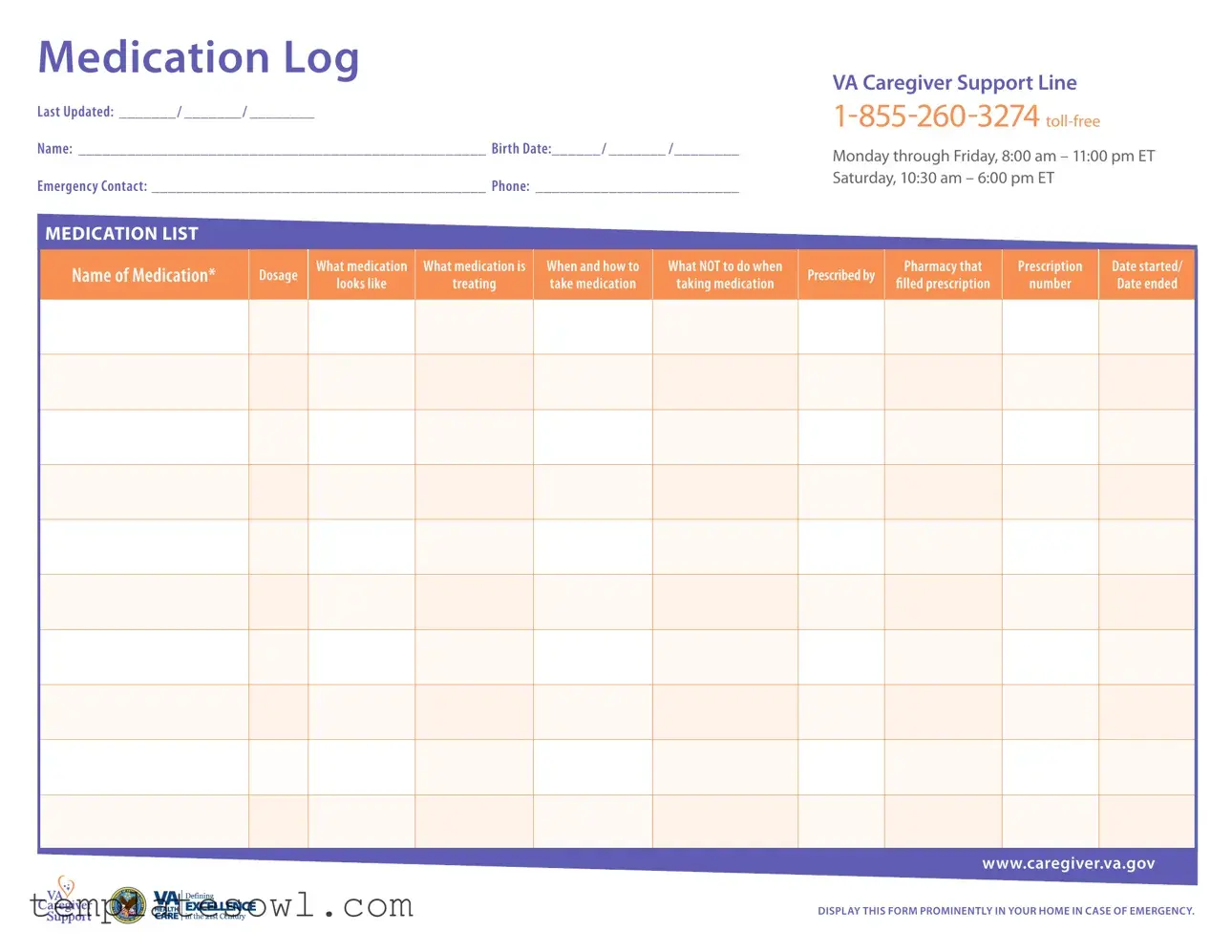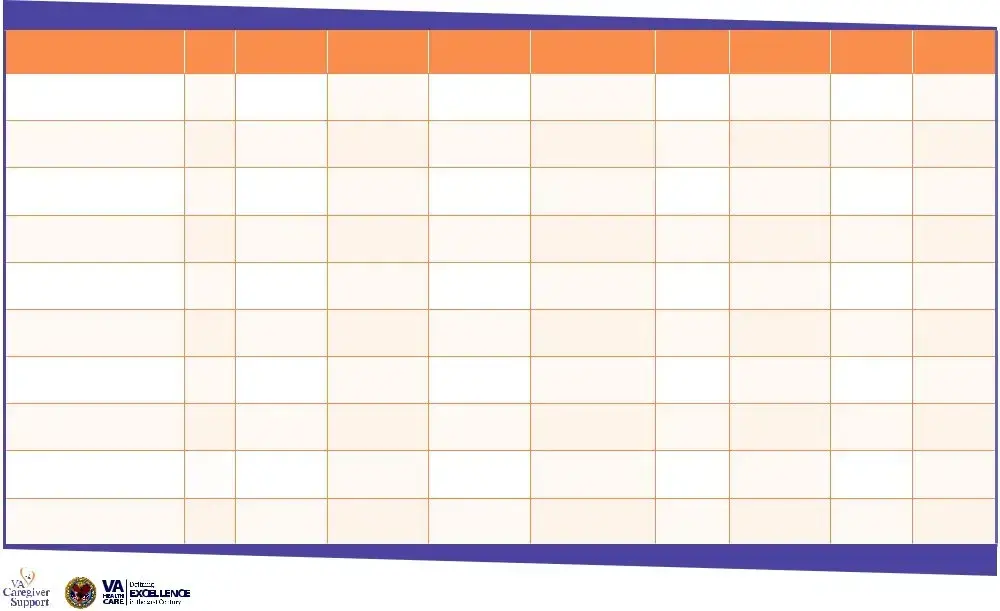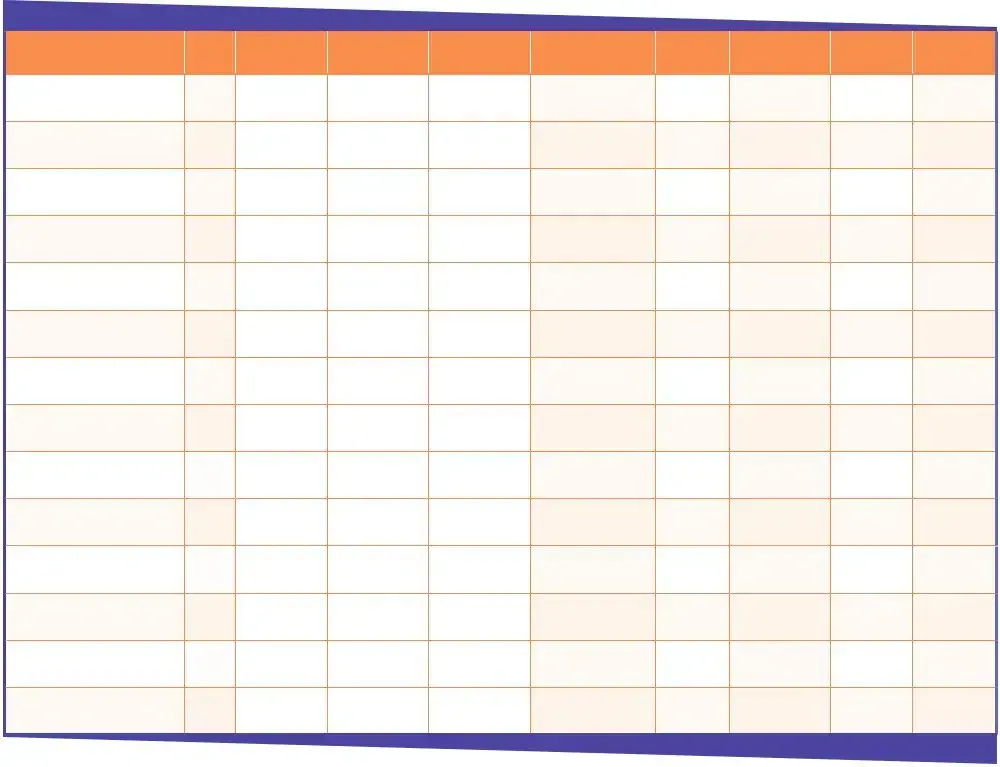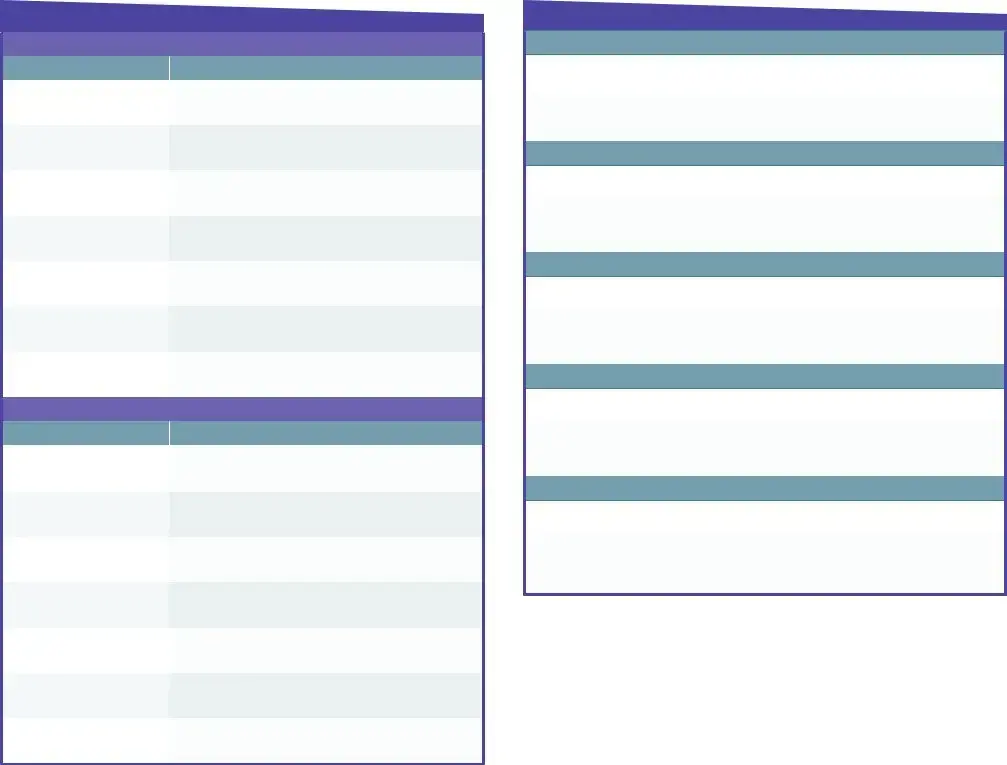What is the purpose of the Medication Log form?
The Medication Log form serves as a comprehensive record of an individual's medications, allergies, and reactions. It helps caregivers and healthcare providers track the medications being taken, ensuring that everyone involved has essential information readily available. This can be particularly crucial in emergency situations or during medical appointments, where detailed knowledge of a patient's medication history can influence treatment decisions.
How should I fill out the Medication List section?
When completing the Medication List, start by listing the name of each medication exactly as prescribed. Next, note the dosage, which indicates how much of the medication should be taken. Describing what the medication looks like can be particularly helpful for accurate identification. Additionally, clarify what condition the medication is treating and include specific instructions on when and how to take it. Don’t forget to mention any precautions, such as what not to do while on the medication. Complete each entry with the name of the prescribing physician, the pharmacy that filled the prescription, the prescription number, and the dates the medication was started and ended.
Why is it important to display the Medication Log prominently in my home?
Displaying the Medication Log prominently ensures that important medical information is easily accessible in case of an emergency. Whether a medical professional needs to refer to it during a crisis or a caregiver requires quick access when making medical decisions, having the form visible can save precious time. In stressful situations, clarity and accessibility often become keys to effective care.
What information should I include regarding drug allergies?
In the area designated for drug allergies, it is vital to note any known allergies to medications, including the specific prescription name and the nature of the reaction experienced. This information can significantly affect treatment plans, as healthcare providers need to avoid prescribing medications that could trigger harmful responses. If there have been recent medications that caused problems or did not work, include those as well, providing details about the specific issues encountered.
Who should I list under the Physicians section?
In the Physicians section, you should list all primary and specialist medical providers involved in your care. Start with your primary care physician, then add any specialists who manage your health in particular areas, such as cardiology, endocrinology, or neurology. Include their phone numbers and addresses to ensure that caregivers and healthcare providers can quickly reach those who are familiar with your medical needs.
How often should I update the Medication Log?
It is important to update the Medication Log regularly. Each time there is a new prescription, a change in dosage, or a medication is discontinued, the log should reflect these updates. Additionally, whenever there are changes related to allergies or reactions to medications, be sure to add this information promptly. Keeping the log current is crucial for maintaining accurate and safe medical care.
Where can I find more information about caregiving resources?
For more information about caregiving resources, you can visit www.caregiver.va.gov. This website is an excellent starting point to find additional support and resources for caregivers. It offers guidance on various topics related to caregiving, including managing medications, understanding medical conditions, and accessing local services.




